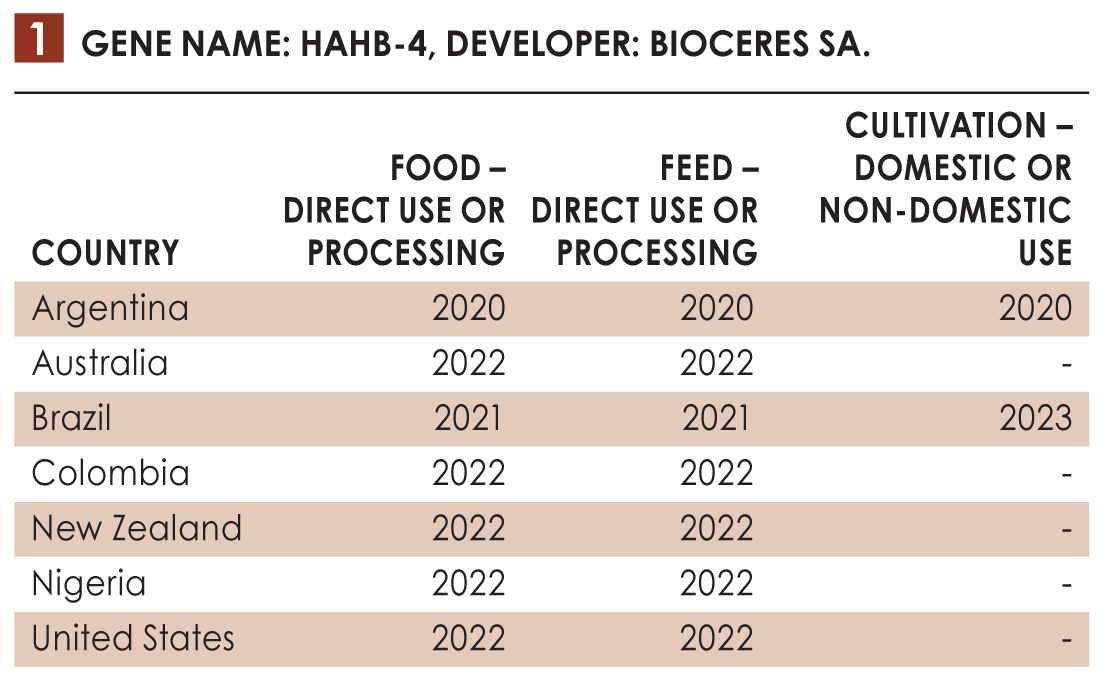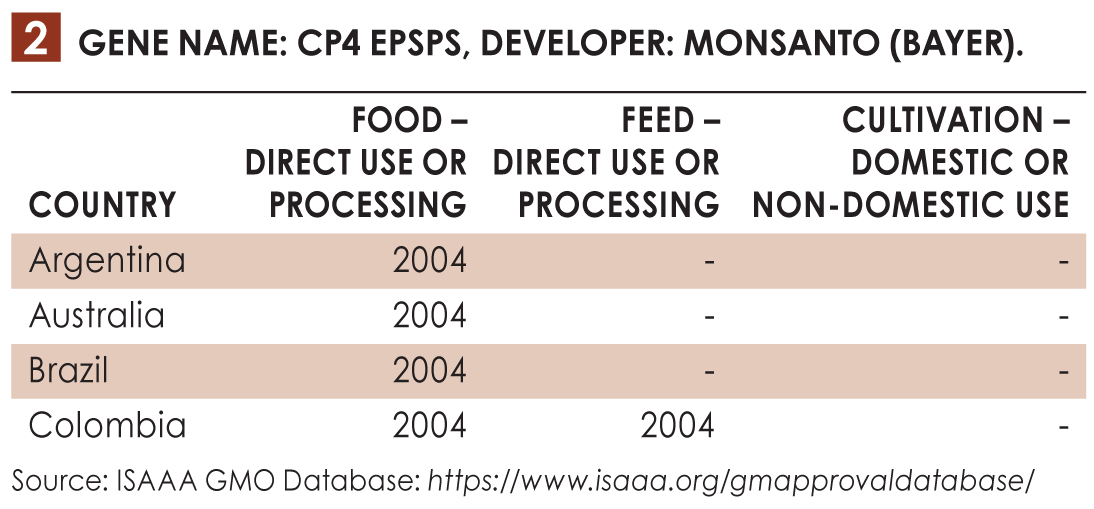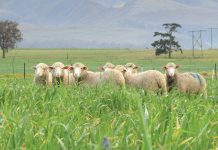Global food security demands the development of innovative technologies and breeding techniques to develop improved crops that can increase and secure food production on arable land available for agriculture without increasing the use of additional resources.
Throughout the ages, plant breeders used the natural variation in plant genomes, which plants use to adapt to their changing environments, in breeding programmes. Modern varieties of maize, wheat and rice are dramatic examples of the end result of human selection in agricultural crops. Improvement of the most desirable agronomic and yield-enhancing traits has resulted in crop varieties that are safe, robust, and capable of growing under a wide range of environmental conditions.
In future, crops should be able to withstand changing environmental conditions, as well as disease and pest pressure. This is where applications of new breeding technologies can play a significant role. ‘These technologies enable scientists and breeders to give farmers access to a variety of improved seed choices to sustain food and fibre production, taking these challenges into consideration,’ says Dr Magdeleen Cilliers, policy and research manager at the South African National Seed Organisation (SANSOR).
She adds that the world of gene editing enables breeders to explore new possibilities and by making small genetic changes, they can help protect crops from changing climatic conditions while still also improving other attributes.
Advances in genome sequencing and molecular breeding have increased the rate of gene discovery. Scientists are continuously using new tools to improve plant breeding outcomes such as molecular markers to help identify desirable as well as undesirable traits, doubled haploids, reverse and shuttle breeding. Other innovations that are used in breeding include devices like sensors, detectors, and robotics which are combined with management technologies for more precise and efficient production systems.
The techniques originally used to develop transgenics included viral vectors, Agrobacterium-mediated transformation or biolistics (gene guns). Since then, molecular biology has developed a variety of new genome modification techniques, says Dr Hennie Groenewald, executive manager of Biosafety South Africa.
These new breeding techniques refer to a group of technologies and techniques that give scientists the ability to change an organism’s DNA with precise modification of the nucleotide sequence of a genome and include meganuleases (MNs), zinc-finger nucleases (ZFNs), transcription activator-like effector nucleases (TALENs) and, in particular, clustered regularly interspaced short palindromic repeats (CRISPR) and CRISPR-associated (Cas) proteins from the CRISPR/Cas system that are more precise and predictable. Other techniques include reverse breeding and trans-grafting.
Both TALENs and CRISPR/Cas are being widely used to engineer plants to facilitate new trait development because these techniques speed up the natural process of selective breeding with the promise of the development of new, more robust crops that can be used to feed and fuel the growing world population more efficiently (Straight From The Scientist: Jon Chesnut on CRISPR versus TALEN – Behind the Bench, thermofisher.com).
New breeding techniques are gaining popularity in plant breeding programmes around the world due to their greater precision and potential to reduce varietal development times. According to Chantel Arendse, lead: Plant Biotechnology at CropLife SA, NBTs are a valuable and complementary addition to modern plant breeding practices, expanding the toolbox for crop improvement.
According to Dr Cilliers, it is important to understand that some of the new breeding technique products can still be classified as GMO products.
In 2021 the Department of Agriculture, Land Reform and Rural Development (DALRRD) released a public notification confirming that the risk assessment framework that exists for GMOs under the Genetically Modified Organisms Act, 1997 (GMO Act), would apply to NBTs.
Countries such as Brazil, Argentina, Israel, the USA, Japan, Nigeria, Kenya, and Malawi have adapted their regulations to exclude genomic edits that could have happened naturally from being regulated as GMO, such as targeted deletions.
Wheat breeding
Wheat is one of the most important staple food crops of the world, and continuous genetic improvement and innovations in plant breeding are vital to improving crop yields, quality, and resistance to pests and diseases in the face of climate changes and to meet the demands of the rapidly growing world population.
Traditionally wheat is not the leading staple crop in sub-Saharan Africa, but population growth and urbanisation changed food preferences with a growing demand for easy to prepare and fast food, including bread, biscuits, pasta, noodles, and porridge. Wheat is thus becoming a more important part of the African food basket (Tadesse et al., 2019).
Conventional breeding has led to the development of current high-yielding wheat varieties, and recent achievements in innovative new plant breeding methods are expected to augment conventional breeding to further increase production.
Advances in wheat breeding and production technologies such as molecular biological genome analysis, marker-assisted breeding, and new breeding techniques such as genetic modification and gene editing, have broadened the scope in which scientists and breeders can work. Consequently it also expanded the possibilities and speed of breeding and crop management.
According to Dr Groenewald, NBTs are being used to develop wheat with reduced gluten content that could become an ingredient in food products for people with gluten intolerance, drought-tolerant wheat and wheat resistant to pests and diseases.
According to a paper by Ortiz et al., published in 2007 and called ‘High yield potential, shuttle breeding, genetic diversity, and a new international wheat improvement strategy’, international wheat improvement conducted by the International Maize and Wheat Improvement Centre (CIMMYT) focuses on the targeting of traits in respective mega-environments, and the use of participatory methods, especially in marginal environments.
‘The main features of this wheat improvement strategy include the introduction of new and novel sources of genetic variation through wild species, landraces, and, potentially, the use of transgenes for intractable traits. This variation will be combined using international shuttle breeding, and increased breeding efficiency will be achieved through marker-aided methods, more targeted use of crop physiology, plant genetics, biostatistics, and bioinformatics. Likewise, CIMMYT will increase its focus on the needs of end-users by emphasising regional efforts in participatory research and client-oriented plant breeding,’ the paper stated.
The current situation regarding research and approvals
GMO wheat products
- HB4 wheat
Currently in South Africa the HB4 wheat (drought stress tolerance) is approved for import but not for commercial cultivation or planting. ‘HB4 wheat has been approved for commodity import in South Africa as well as some other countries, which means it may enter the food and feed chains. However, as far as I know it has not entered the consumer market commercially,’ says Johan Burger, professor: Molecular Genetics, Department of Genetics in the Faculty of AgriSciences at Stellenbosch University. ‘The work done in this regard, however, opened the door wide for new innovations in wheat breeding.’ (See Table 1 for more information.) - Glyphosate herbicide tolerance
The cp4 epsps trait has not been approved yet in South Africa (See Table 2 for more information).

 NBTs
NBTs
Africa is on the frontline of employing new breeding innovations to provide solutions to the specific challenges facing agricultural production on the continent. According to the International Service for the Acquisition of Agri-biotech Applications (ISAAA), research is primarily being focused on developing crops and animals resistant to economically important diseases and pests endemic on the continent.
A project in Egypt is looking specifically to develop sal1-mutant drought-tolerant wheat using CRISPR/Cas genome editing. This project is employing CRISPR/Cas9 genome editing techniques to generate drought stress tolerant wheat by inactivating the sal1 gene, a negative regulator of drought tolerance. The project leader is Prof Naglaa Abdallah from Cairo University in Egypt.
According to Marizanne Horn, marker and biotech specialist at Syngenta, the company has wheat breeding programmes in Europe and South Africa and is supporting conventional breeding methods with technologies such as doubled haploid production, speed breeding, reverse and shuttle breeding, marker-assisted selection methods in which thousands of marker data points can be generated in a very short period, bioinformatics (the analysis of ‘big’ datasets) and phenotypic assessments.
She says Syngenta prefers to work cross-functional in the two regions to combine the knowledge and utilise germplasm from both regions to breed especially against disease problems and for improved wheat quality and yield. The company is continuously probing scientific literature and liaising with collaborators to stay on the forefront of new innovations for wheat research and improvement whilst also investing in new research internally.
Summary
It is clear that novel trait introgression and breeding techniques can and will be used in future to develop unique wheat – and other crop – varieties that will benefit adaptability, yield, and profitability to help solve the worldwide food demand.
To familiarise yourself with some of the concepts described in the article, read their definitions available by scanning the QR code.
Reference
- Ortiz, R, Trethowan, R, Ortiz-Ferrara, G, Iwanaga, M, Dodds, J, Crouch, J, Crossa, J & Braun, H. 2007. High yield potential, shuttle breeding, genetic diversity, and a new international wheat improvement strategy. www.researchgate.net/publication/226091892.
- Tadesse, W, Bishaw, Z & Assefa, S. 2019. ‘Wheat production and breeding in Sub-Saharan Africa: Challenges and opportunities in the face of climate change’, International Journal of Climate Change Strategies and Management, Vol. 11 No. 5, pp. 696-715.





























